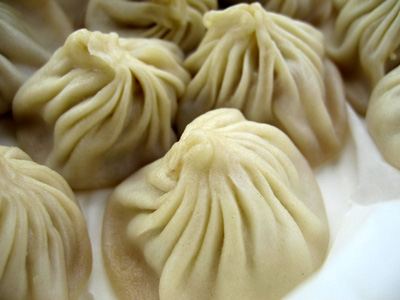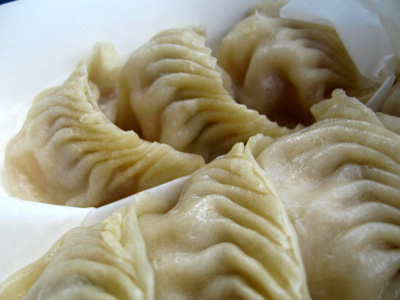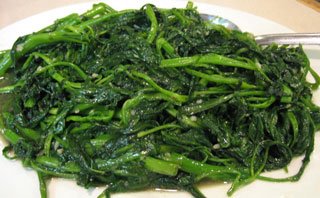Yes, they are less than attractive and yes, they are old (from September 2008). For a while, I was debating whether to delete them forever, but a recent sequence of events involving two trips to Southern California in the last week, encouraged me to post them.
These pictures are from a wedding I attended in Los Angeles. My friend's wedding was set on the University of California, Los Angeles (UCLA) campus and she held her rehearsal dinner in Westwood, at Palomino on Wilshire Boulevard. It was a sweet and intimate wedding, complete with swing dancing, a breathtaking view of the sun setting on the architecturally stunning red brick buildings on the UCLA campus, and fun guests. But, I hesitated on posting these pictures in part because of my interaction with a certain type of person during the wedding events...
The anti-food blogger.
Allow me to explain the entire story. I don't usually try to publicize my blog in public circles, but if I meet someone who is really into food, I will often casually say, "Hey, it seems like you love fine dining/cooking/eating in general. I do too! I even have a food blog!"
Well, at the rehearsal for the wedding, that's exactly what happened and exactly what I did. But instead of the usual response of, "Wow, you do? What's the address? I will check it out" response, I was greeted with his, "I hate food bloggers" line.
After hearing his response, I was taken aback. After I asked him "why," he explained to me in a Mario Batali-type way, that food bloggers generally don't fact-check their sources or research their recipes, and often pontificate their unsubstantiated assertions to those who regard them as credible sources who espouse reliable facts. I responded to him that while the web is flooded with bad information and spam garbage, the internet as a whole, has increased the availability of good information, valuable opinions, and entertaining multimedia (images, video, and sound recordings) to the public and food blogs have done that as well. Also, internet users and blog readers are cognizant that not all information on the web is 100% accurate, and most people know that information on Wikipedia is not gospel or like the contents of a university textbook.
I don't think he was convinced by my answer, and I wasn't really swayed by his opinion either. But we continued our conversation about food blogs, and eventually, we simply agreed to disagree. Thankfully, by the end of the night, we both realized that we were both opinionated people, who actually did share quite a lot in common.
Nevertheless, I was a little riled up, and thus, neglected to really pay attention to what was on the special menu that Palomino has given to our wedding rehearsal party. But here are the pictures and the menu descriptions of what I "think" the dishes were, and some food pictures from the wedding itself.
In clockwise order, these pictures are from Palomino: (1) braised beef short rib with mascarpone polenta, white beans cooked with rapini and pancetta, and gremolata; (2) capellini pomodoro, dressed with extra virgin olive oil and chiffonaded basil, and cooked with chicken, plum tomatoes, garlic, and Parmesan; and (3) prawn scampi cooked in a citrus-herb butter with capers and white wine, and served with garlic crostini and herb capellini.

And here is what I had at the rehearsal dinner and at the wedding, in clockwise order from the top: (1) ravioli made from fresh saffron pasta filled with lobster, bay scallops, and tarragon with herb mascarpone, from Palomino; (2) coconut shrimp and a selection of tea sandwiches, breads, and tapenades; (3) ahi tuna teriyaki encrusted with two types of sesame seeds; and (4) tapenades and breads.

After my discussion with this anti-food blogger friend, I gave a lot of thought to the purpose of my food blogging. Admittedly, I don't have a culinary school degree, but I love eating, and that is why I blog. What do you think about food blogging? I would love to hear your thoughts!

 Sorry I have been so quiet lately. . . I have been a little
Sorry I have been so quiet lately. . . I have been a little  Also, use the flavored oils and hot chili sauce to taste.
Also, use the flavored oils and hot chili sauce to taste. As you eat your rice paper wraps, don't forget to eat your fill of their selection of pickled, salted, and fermented vegetables, called
As you eat your rice paper wraps, don't forget to eat your fill of their selection of pickled, salted, and fermented vegetables, called 
 And,
And,  I hope this brief post gave you a nice orientation on Korean barbecue (if you were previously unacquainted with it)! Korean barbecue is very fun: it is as elaborate as a Broadway production because it comes replete with 1) sizzling, spitting, and glowing grill grates and 2) smoke which continuously emanates from the grill. Best of all, Korean barbecue restaurants are great places to take a large group of friends, especially friends who are collaborative, ambitious people who take charge at social events--or if those friends merely like to barbecue meat!
I hope this brief post gave you a nice orientation on Korean barbecue (if you were previously unacquainted with it)! Korean barbecue is very fun: it is as elaborate as a Broadway production because it comes replete with 1) sizzling, spitting, and glowing grill grates and 2) smoke which continuously emanates from the grill. Best of all, Korean barbecue restaurants are great places to take a large group of friends, especially friends who are collaborative, ambitious people who take charge at social events--or if those friends merely like to barbecue meat! 


 Okay. Maybe our pent-up road rage was causing us to be easily disgruntled. "Give it another chance," I pleaded to both him and myself.
Okay. Maybe our pent-up road rage was causing us to be easily disgruntled. "Give it another chance," I pleaded to both him and myself.

 Although the jow yen yo yee was colorfully presented and looked delicious, the taste was something else. Stale oil permeated the batter-coating and made it taste like a musty closet--complete with the strange moth ball aroma. Plus, they took the "yen" (salt) part of the recipe to a new extreme. It was so salty, I could feel my mouth reflexively and unconsciously puckering, as if trying to expel what was inside of it.
Although the jow yen yo yee was colorfully presented and looked delicious, the taste was something else. Stale oil permeated the batter-coating and made it taste like a musty closet--complete with the strange moth ball aroma. Plus, they took the "yen" (salt) part of the recipe to a new extreme. It was so salty, I could feel my mouth reflexively and unconsciously puckering, as if trying to expel what was inside of it.